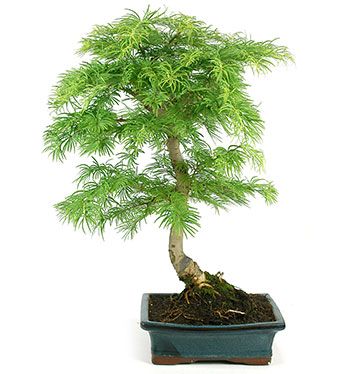Characteristics
Small deciduous conifer. Slow to moderate growth. The grey-brown bark is very pretty and cracks with age. Very flexible, bright green leaves which turn a very attrative golden in autumn.
Location
Outside in half shade or full sun.
Watering
Plentiful especially in summer. The ends of the leaves dry out very quickly when the tree suffers water shortages, particularly in full sun.
Fertilization
From spring to autumn, in summer you can keep on giving fertilizer but with less frequency, In general, every 20-30 days depending on the fertilizer.
Re-potting
Every 2-3 years, at the beginning of spring budding. In older specimens you can wait up to 5 years without transplanting.
Substrate
Akadama 100% or mixed with 30% volcanic soil. You can use some peat as it prefers acid soils.
Pruning and pinching
Pruning
Structural pruning is done in winter when the leaves have fallen as it is easier to work.
Pinching
New shoots are cut back when they are still soft. You can also let them grow and in winter cut them back to the first of second bud.
Wiring
End of summer and autumn
Curiosities
There are many varieties but the “nana” variety is used extensively in the bonsai world.

